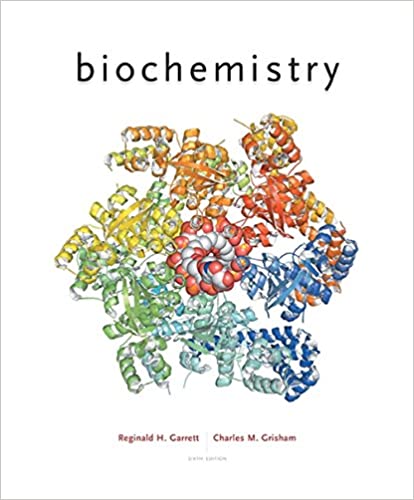
Biochemistry 6th Edition by Reginald Garrett,Charles Grisham
Edition 6ISBN: 978-1305577206
Biochemistry 6th Edition by Reginald Garrett,Charles Grisham
Edition 6ISBN: 978-1305577206 Exercise 3
Understanding densities of membrane components
Sucrose gradients for separation of membrane proteins must be able to separate proteins and protein-lipid complexes having a wide range of densities, typically 1.00 to 1.35 g/mL.
a. Consult reference books (such as the CRC Handbook of Biochemistry) and plot the density of sucrose solutions versus percent sucrose by weight (g sucrose per 100 g solution), and versus percent by volume (g sucrose per 100 mL solution). Why is one plot linear and the other plot curved?
b. What would be a suitable range of sucrose concentrations for separation of three membranederived protein-lipid complexes with densities of 1.03, 1.07, and 1.08 g/mL?
Sucrose gradients for separation of membrane proteins must be able to separate proteins and protein-lipid complexes having a wide range of densities, typically 1.00 to 1.35 g/mL.
a. Consult reference books (such as the CRC Handbook of Biochemistry) and plot the density of sucrose solutions versus percent sucrose by weight (g sucrose per 100 g solution), and versus percent by volume (g sucrose per 100 mL solution). Why is one plot linear and the other plot curved?
b. What would be a suitable range of sucrose concentrations for separation of three membranederived protein-lipid complexes with densities of 1.03, 1.07, and 1.08 g/mL?
Explanation
a. Both plots have equivalent values for...
Biochemistry 6th Edition by Reginald Garrett,Charles Grisham
Why don’t you like this exercise?
Other Minimum 8 character and maximum 255 character
Character 255


